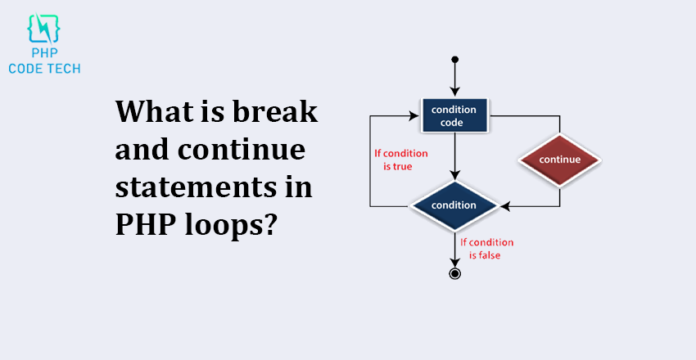In PHP, the break and continue statements are used within loops to alter the flow of execution. Here’s an explanation of how break and continue work in PHP:
breakstatement:
Thebreakstatement is used to exit a loop prematurely. When encountered, thebreakstatement terminates the execution of the innermost loop (whether it’s afor,while,do-while, orforeachloop) and continues execution with the next statement after the loop.
Example of using break:
for ($i = 0; $i < 5; $i++) {
if ($i == 3) {
break; // Exit the loop when $i equals 3
}
echo $i . ' ';
}
Output:
0 1 2
In this example, the loop iterates from 0 to 4. When $i is equal to 3, the break statement is encountered, and the loop is immediately terminated. The value of $i is never echoed when it’s 3.
continuestatement:
Thecontinuestatement is used to skip the current iteration of a loop and move to the next iteration. When encountered, thecontinuestatement jumps to the next iteration, without executing the remaining code within the loop for that particular iteration.
Example of using continue:
for ($i = 0; $i < 5; $i++) {
if ($i == 2) {
continue; // Skip the current iteration when $i equals 2
}
echo $i . ' ';
}
Output:
0 1 3 4
In this example, the loop iterates from 0 to 4. When $i is equal to 2, the continue statement is encountered. As a result, the code within the loop for that iteration is skipped, and the loop proceeds to the next iteration.
Both break and continue statements provide control over the execution flow within loops, allowing you to selectively exit the loop or skip specific iterations based on certain conditions.


